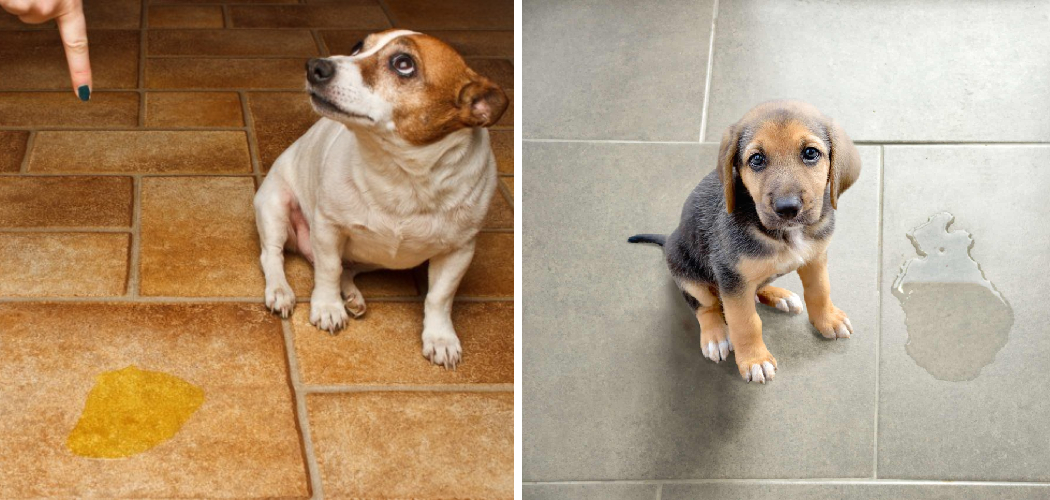Do you have a pup who won’t stop peeing on your tile floor? If so, the process of curbing this unwelcome behavior can be both tedious and frustrating. From ensuring that potty training was done properly to providing your furry friend with ample mental stimulation, there are numerous ways to help them break the habit of relieving themselves indoors.
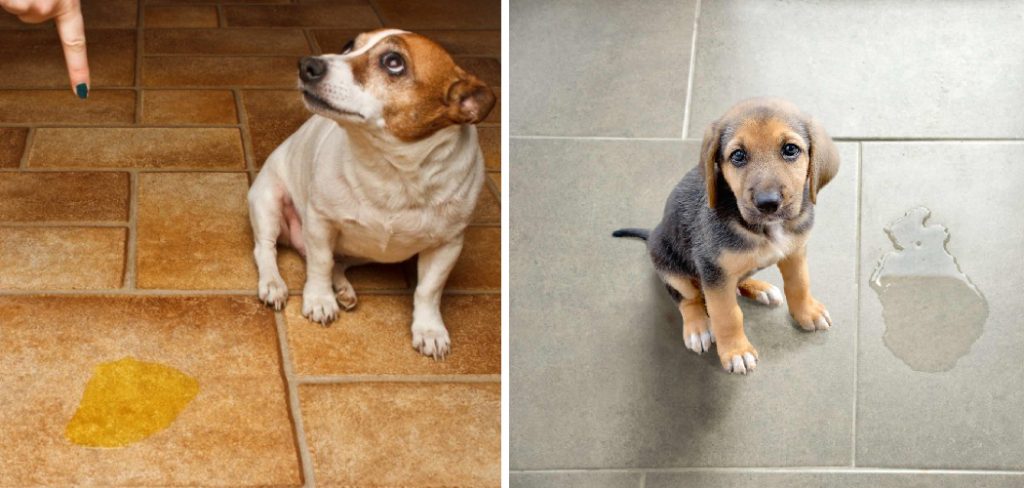
In this blog post, we will explore different strategies for how to stop dog from peeing on tile floor and provide tips for preventing future accidents. Read on to start solving your canine potty problems!
If you’ve ever had a house-trained dog, then the thought of them peeing in your home is a nightmare. It’s embarrassing, unsightly, and frustrating–especially if it’s on your tile floor. But don’t despair: there are steps you can take to help train your dog not to pee on the tile and keep this problem from arising again.
Here we will cover why dogs pee inside, how to prevent future accidents, and tips for cleaning up existing messes; so read on to learn more!
Why is It Important to Stop Dog From Peeing on Tile Floor?
1. To Protect Your Tile Floors From Damage
One of the primary reasons why it is important to stop your dog from peeing on tile floors is that urine can cause damage. Urine contains ammonia, which is a cleaning agent that can break down the sealant and protective coating applied to tiles. This could lead to discoloration, staining, and an overall decrease in the lifespan of your tiles.
2. To Prevent Unpleasant Odors
Urine has an unpleasant odor, and this can linger in your home even after you’ve cleaned it up. The ammonia smell can be especially strong on tile floors since the sealant was designed to protect against spills but not necessarily urine. This odor could make your home uncomfortable for guests or family members.

3. To Reduce Health Risks
The ammonia in urine can be dangerous to breathe, and it can cause skin irritation if you have to clean up the mess. Urine also carries bacteria that could spread around your home, which could lead to various health issues for you or your family. All of these are important reasons why it is important to stop your dog from peeing on tile floors.
4. To Save Money
Finally, if you don’t stop your dog from peeing on tile floors, the cost of cleaning up and replacing damaged tiles can add up quickly. You could also end up with expensive repair bills if the damage is severe enough. Taking steps to prevent this problem will save you money in the long run.
By understanding why it is important to stop your dog from peeing on tile floors, you can take the necessary steps to address this issue. Start by being vigilant and monitoring your dog’s behavior so you can catch him in the act if he tries to go inside.
12 Ways About How to Stop Dog From Peeing on Tile Floor
1. Use a Pet-Repellent Spray
A pet repellent spray such as Nature’s Miracle or other brands can be sprayed on the areas your dog is peeing to discourage them from going there again. Also, you have to make sure not to spray the product directly on your dog as it can be harmful to them.
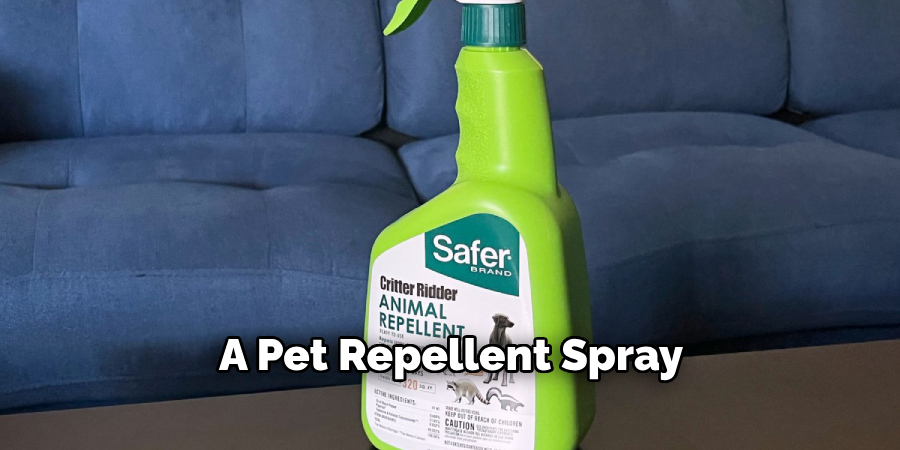
2. Clean Up Accidents Immediately
Make sure you clean up any accidents immediately with a pet-safe cleaner or an enzymatic cleaner like Nature’s Miracle. This will help remove the smell and deter your doggo from peeing in that area again. Also, make sure to clean the area thoroughly.
3. Provide an Ideal Spot for Potty Breaks
If you have a tiled floor, create an ideal spot where your pup can do their business by providing a pee pad, litter box, or other designated area in which they can go potty. This will encourage them to use that area instead of going on the tile floor.
4. Use Positive Reinforcement
Positive reinforcement is key when it comes to potty training your pup. When they go in the right spot, reward them with treats and praise so that they learn that going there is good behavior. Also, be sure to ignore accidents and never punish your pup for having them.
5. Change Your Dog’s Diet
If your dog is having trouble with potty training, it might be due to an underlying health issue. Consider changing their diet to something that is easier for them to digest or a hypoallergenic option so that they are able to hold it longer and have fewer accidents.

6. Use Proper Potty Training Techniques
It’s important to use proper potty training techniques when teaching your pup where to go. This includes taking them out on a schedule, using positive reinforcement when they do well, and making sure not to punish or scold them for having an accident.
7. Utilize a Crate
If you’re having difficulty potty training your pup, consider using a crate or other type of confinement area. This will help them learn where they are supposed to go and discourage them from going on the tile floor.
8. Provide Enough Potty Breaks
Make sure you are providing your pup with enough potty breaks throughout the day. It’s recommended that you take them out at least once every two hours, especially during the early stages of potty training.
9. Block Off Access to Problem Areas
If your pup is peeing in a specific area, consider blocking off access to it by using furniture or other objects. This will help prevent them from being able to get into that area and discourage them from going there again.
10. Increase Exercise and Mental Stimulation
Sometimes, a pup’s poor potty training could be due to boredom or lack of exercise. If this is the case, make sure you are providing your pup with enough exercise and mental stimulation throughout the day. This will help tire them out and keep their mind occupied so they don’t feel the need to pee on the floor.

11. Have Regular Vet Visits
If all else fails, it might be time to have your pup checked out by a vet to make sure there isn’t an underlying health problem causing them to go in the wrong spot. Also, they may be able to provide additional tips and advice on how to help your pup learn the proper potty training techniques.
12. Seek Expert Advice
If you’re still having trouble potty training your pup after trying all of these methods, it might be time to seek out expert advice from a professional dog trainer or behaviorist. They will have additional tips and tricks to help you better understand your pup’s behavior and find a solution that works best for them.
13. Consider a Different Flooring Option
If all else fails, you may want to consider replacing your tile floors with a different type of flooring that is more urine-resistant. This could include vinyl, laminate, or hardwood flooring. These materials are much easier to clean and won’t be damaged by your pup’s accidents as easily as tile.
By following these tips, you can learn how to stop dog from peeing on tile floor in no time. It may take some time and patience, but with the right tools and techniques, you can effectively train your pup not to go to inappropriate places. Good luck and happy training!
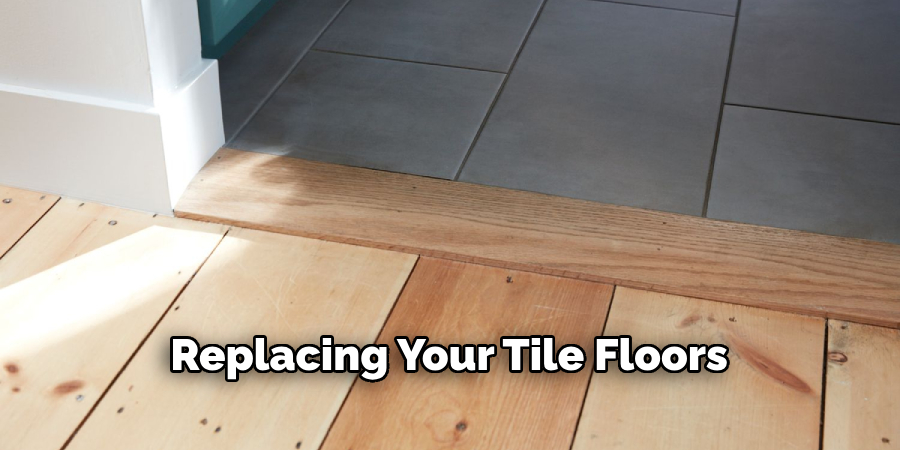
Frequently Asked Questions
What Precautions Should I Take Before Trying to Stop My Dog From Peeing on Tile Floor?
Before trying any of the methods outlined below, it’s important to take certain precautions. First and foremost, make sure your dog is healthy and not suffering from any medical conditions that could be causing them to have difficulty controlling their bladder.
If there are underlying medical issues, address those first before trying any of the below methods. Additionally, make sure your dog is properly house-trained and has access to appropriate elimination areas in your home. If these issues are addressed beforehand, you will be more successful in stopping them from peeing on tile floors.
What Are Some Ways I Can Stop My Dog From Peeing On Tile Floor?
There are several ways you can stop your dog from peeing on tile floors. First, you should keep the area clean by using an enzyme-based cleaner to get rid of the urine smell. Doing this will help discourage them from returning to the same spot again. You can also use deterrents such as plastic carpet runners or double-sided tape to make the surface uncomfortable for them to stand on.
You can also utilize positive reinforcement techniques such as verbal praise and treats when they do use the appropriate areas in your home for elimination. Finally, making sure you provide your dog with plenty of potty-breaks throughout the day is an effective way to reduce the likelihood of them going on tile floors inside the house.
How Much Time Does It Take For A Dog To Stop Peeing On Tile Floor?
The amount of time it takes for a dog to stop peeing on tile floors largely depends on the individual dog and the methods you use. Generally, if all underlying medical issues have been ruled out and you are implementing the above strategies consistently, most dogs should be able to learn within several weeks.
Of course, there are some cases where it may take longer. In these instances, it can be helpful to consult a professional for additional guidance and support.
What Should I Do If My Dog Continues To Pee On Tile Floor Even After Taking These Steps?
If your dog continues to go on tile floors even after taking all the necessary precautions and implementing the strategies outlined above, it may be helpful to consult a professional. They can provide additional insight and help you troubleshoot any issues that might be getting in the way of your success. Additionally, they may also be able to suggest further methods to try or medications that could help your dog with this problem.
Can I Use Punishment To Stop My Dog From Peeing On Tile Floor?
No. Punishment is not an effective way to stop your dog from peeing on tile floor, and it can lead to further issues such as fear or aggression. Instead, focus on positive reinforcement techniques and providing plenty of potty breaks throughout the day to increase the likelihood of them going to the appropriate areas in your home.
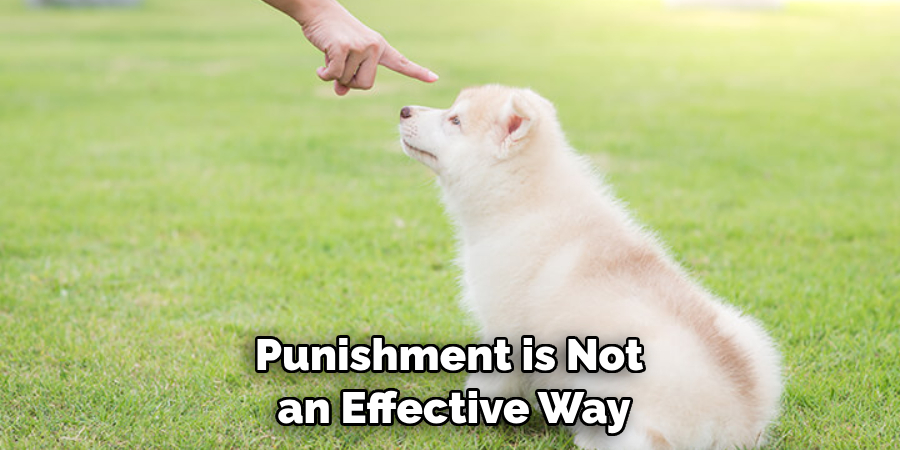
How Much Time Should I Spend Training My Dog To Stop Peeing On Tile Floor?
The amount of time you should spend training your dog to stop peeing on tile floors depends on the individual dog and the methods you are using. Generally, it is recommended to start with short training sessions and gradually build up as your dog learns and succeeds.
Additionally, make sure that all underlying medical issues have been addressed and that your dog is properly house-trained before attempting to train them. Lastly, remember to be patient as it may take several weeks for them to learn the desired behavior.
Conclusion
All in all, stopping a dog from peeing on tile floors is not an easy task; however, with consistency, patience, and using some of the helpful tips mentioned in this post, there is hope to train your pup. If you find yourself struggling to implement these rules and routines with your canine friend, remember that there are plenty of resources available for help.
From online forums to dedicated trainers, don’t be afraid to reach out: everyone’s experience with fur babies is unique and trying new strategies can be extremely beneficial!
Now you know how to stop dog from peeing on tile floor! Keep attempting different techniques over time until you find what works best for both you and Fido. After all the hard work and dedication put into this training process, it will be more than worth it in the end—you’ll soon have a well-mannered pup able to exist peacefully around tiled floors!
